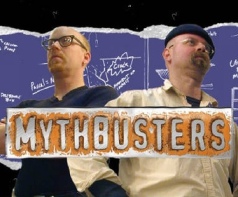 Back in 2009 I wrote a 4-part series examining the logic and practices behind proactively building talent pipelines and how I believe that traditional talent pipelining can be significantly improved through leveraging Lean production principles to achieve Just-In-Time recruiting.
Back in 2009 I wrote a 4-part series examining the logic and practices behind proactively building talent pipelines and how I believe that traditional talent pipelining can be significantly improved through leveraging Lean production principles to achieve Just-In-Time recruiting.
I haven’t written much on the topic of applying Lean principles to the recruiting life cycle in quite a while, and since my readership has expanded significantly over the past 4 years, I’d like to expose a broader and larger audience to the concepts and get 2013-level feedback from the talent acquisition community.
I still believe as strongly as ever that there are serious limitations, inefficiencies and consequences associated with building traditional talent pipelines (not the least of which is a poor candidate experience), and that leveraging Lean production principles in recruiting can yield much better results, for both candidates and companies.
Keep in mind that this is a 4-part series, so you may want to hold your comments until you read the entire collection.
Building Talent Pipelines and Just-In-Time Recruiting – Part 1
When I wrote about how I learned to use Boolean search to leverage information systems to quickly source candidates, and I challenged the concept and practice of building candidate pipelines.
Amybeth Hale commented on my post (thank you – you inspired me to finally write this one!) and mentioned that she was puzzled by the mention of the fact that I never pipelined candidates. I’ve literally never had to. Not for the rarest skillset, the most challenging under-market compensation, the highest security clearance, 3rd shift, 100% travel – I’ve successfully recruited for these and more from scratch. Honestly, I’ve never known any other way.
Amybeth feels that my experience may be somewhat unique and this might not be replicable by other sourcers, recruiters, or recruiting organizations. I’ll agree on the first part – that my experience may be uncommon – I’m undeniably a product of the specific environment and circumstances under which I entered the recruiting industry. However, I have to respectfully disagree on the second part. I won’t apologize for it (nor would Amybeth want me to), because professional debate is a good thing, and we should all welcome it! There’s no critical thought or learning involved if we all agree on everything.
On the surface, pipelining candidates and building candidate inventories seems to be just plain and simple common sense. However, sometimes what just “feels right” may in fact not actually be the most effective and efficient method of doing a thing.
Thomas Edison (I’m a fan) once said, “There is always a better way.” My goal has always been to find it. Whether it comes to quickly finding great candidates, creating voicemail and email techniques to get the non-job seeker to respond, developing candidate closing and control techniques, implementing effective time and activity management, etc. – I want to be using the BEST possible way to do a thing. Don’t you?
Keep an Open Mind
I know I am in the minority in my view of candidate pipelining – I’m going to ask you (most likely in the majority) to have an open mind and not just simply “stick to your guns” and what you know/what you’ve been taught. If you are a passionate candidate pipeliner and you’ve built a successful career around that practice – congratulations!
However, be aware that there are other ways to be successful in recruiting, and they might actually be more efficient and/or effective. You’re reading the words of someone who’s been highly productive and successful without ever having to pipeline a single candidate, I’ve never had the benefit of a hiring forecast, and I’ve outperformed all candidate pipeliners I’ve worked with head-to-head on the same positions consistently – even when they’ve had a head start!
How was I able to do this? That’s the good part – there’s a science of sorts behind the success, and it IS trainable and replicable.
Get ready for a paradigm shift – I’m going to move your cheese.
So What is Candidate “Pipelining” Anyway?
I think it’s critical that we first come to a common definition of pipelining candidates. While on the surface we may all appear to be talking about the same thing, we may not be – so to remove any confusion, let’s settle upon David Szary’s definition of developing candidate pipelines: “A pipeline/network of talented professionals (active and/or passive job seekers, pre-screened or not) that you regularly communicate with regarding opportunities with your organization. A pipeline of candidates, that when an opening comes up, you can immediately contact and engage in discussions about the opportunity and/or to network.”
That seems to be as good of an explanation of candidate pipelines as I’ve come across – let me know if you have any refinements or suggestions. I also agree with David’s assessment that most hiring managers have unrealistic expectations (having a candidate pipeline is the magical answer to all challenging hiring needs) and that pipelined candidates are always available (when in fact they are highly “perishable” – regardless of their job search status).
Work-In-Process Inventory
Developing a pipeline of candidates is essentially the development of a candidate “inventory” in the sense of supply chain management – candidates are “held available in stock” for ready access. Furthermore, the cache of candidates built through proactive pipeline recruiting can be classified as a specific type of candidate inventory: work-in-process.
Work-in-process is a production/supply chain concept, used to describe “unfinished” inventory in a production process – this inventory is “either just being fabricated or waiting in a queue for further processing or in a buffer storage.”
A group of candidates that a recruiter stays in routine contact with, without a specific and current need (essentially what Amybeth refers to as relationship maintenance), is essentially a work-in-process (WIP) candidate pipeline.
When most recruiters talk about proactively pipelining candidates – they’re really referring to building work-in-process (WIP) candidate inventories. Candidates in a work-in-process pipeline are typically people identified by a sourcer or a recruiter as people whose work history/experience somewhat closely matches the kinds of positions that an organization typically recruits for. Once identified, these candidates are contacted and screened (to some extent).
These are candidates that are waiting on further “processing” (screening, interviewing, networking, etc.), or essentially remain permanently “in process” – a relationship is maintained with them indefinitely, as the vast majority of these candidates never become a “finished product” (are never hired).
Candidates in a WIP pipeline may be active, passive, or not even looking, and may or may not precisely fit any current hiring needs. However, time and effort is expended to build and maintain a relationship with these candidates to be ready when an opening does arise, or when the candidate’s situation changes and they become available, or to simply network with to gain intel and referrals.
Building Candidate Pipelines is a “Push” Strategy
By definition, candidate pipelines consist of people that are contacted and communicated with without a current need – the whole point of a pipeline of candidates is to have a cache of candidates ready before a specific need arises.
This is what is referred to as a push-based strategy – one in which batches of a product (candidates) are created, not in response to an actual/current customer need, and are processed and “pushed” downstream (in-process) whether there is a need for the specific product produced or not. Push systems often result in the production of large inventories of product that perish (expire, are no longer available, etc.), or are never “sold” (fully finished/utilized/hired, etc.).
The “Logic” Behind Candidate Pipelining
On the surface, pipelining candidates seems like an excellent solution to the challenge of having well qualified candidates available when you need them.
The idea is that if you build a cache of strong candidates before you need them, you will surely fill positions quicker in the future when the need arises. The belief behind building candidate pipelines is that time and energy invested on the “front end” (aka, “proactive recruiting”) can lead to significant time savings later, and perhaps even better candidates due to having more intimate knowledge of the individuals (from the ongoing recruiter/candidate relationship) you are pipelining than you would have with candidates you just identified and contacted for the first time once a hiring need arose (“reactive recruiting”).
The Need For Candidate Pipelines
For many recruiting and staffing organizations, proactively building talent pipelines is absolutely necessary in order to ensure that appropriately qualified talent is available when the actual need arises. It appears to be the ultimate answer to the question of, “What will we do if we get an opening for which we do not have any candidates?”
I think it is very important to examine exactly why most organizations and recruiting professionals believe that building candidate pipelines is the only answer to filling open positions.
This may seem too obvious, but no one ever seems to directly address it, so I will say it. I feel that most recruiters must proactively recruit and build candidate pipelines simply because they are unable to deliver high quality and well matched candidates within 24-48 hours of receiving a hiring need from scratch without a pre-built candidate pipeline. In other words – most people simply can’t do it any other way.
Is there an Alternative to Pipelining Candidates?
Although most recruiters are unable to deliver high quality and well matched candidates within 24-48 hours of receiving a hiring need from scratch without a network of pipelined candidates – it doesn’t mean it’s not possible. Just because developing candidate pipelines is “the way it’s always been done” doesn’t mean it’s the most effective or efficient way to identify and recruit candidates and fill positions in a timely fashion.
The ugly truth is that proactively pipelining candidates ahead of need has many intrinsic limitations and hidden costs that no one seems to want to think or talk about.
There’s always a better way.





 When most people talk about “passive recruiting,” they’re referring to the practice of targeting and recruiting so-called “passive candidates” – people who are not actively looking to make a move from their current employer.
When most people talk about “passive recruiting,” they’re referring to the practice of targeting and recruiting so-called “passive candidates” – people who are not actively looking to make a move from their current employer.